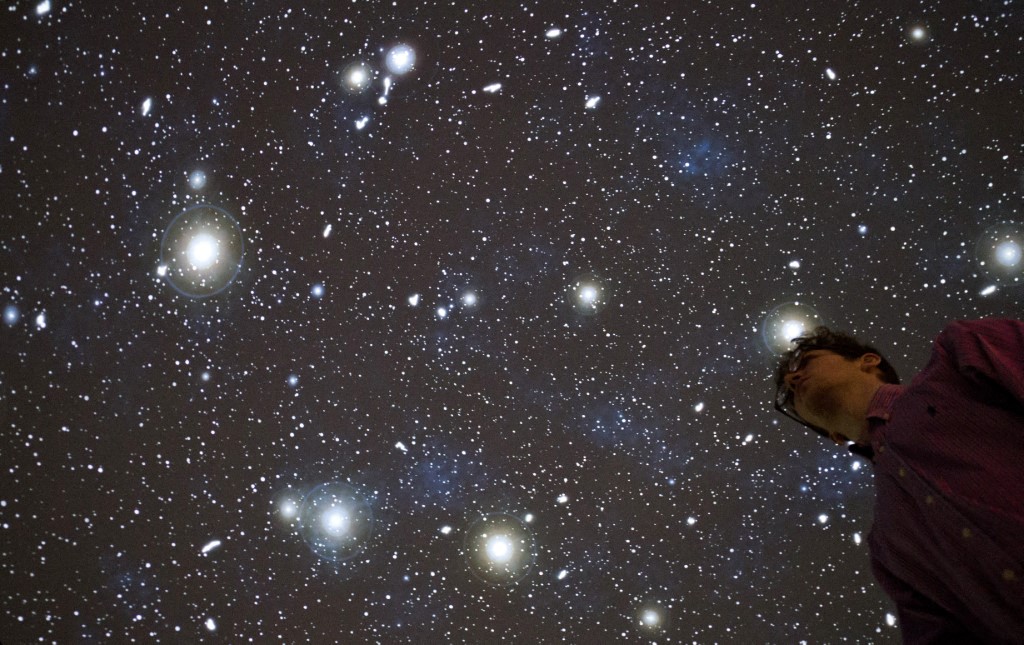
WASHINGTON - Scientists may be coming closer to confirming the existence of dark matter - the invisible stuff thought to make up more than a quarter of the cosmos - as they study a diffuse glow of gamma rays near the center of our galaxy.
Everything visible in the universe is made of ordinary matter - from stars and planets to people and hubcaps and tacos. Ordinary matter can be seen in wavelengths from the infrared to visible light and gamma rays, but comprises only about 5 percent of the universe. Dark matter, which does not absorb or reflect or emit any light, seems to comprise about 27 percent of the universe, with another mysterious component called dark energy accounting for the remaining roughly 68 percent.
Scientists are confident that dark matter exists because of its gravitational effects on a grand scale in the universe. Because of its very nature, its existence has been hard to prove. But research into an excess of gamma rays observed and mapped by the Fermi Gamma-ray Space Telescope across a vast expanse near the heart of the Milky Way offers promise for providing long-sought confirmation.
ALSO READ: China's dark matter explorer Wukong to extend space service
Scientists have advanced two competing explanations for these gamma-ray emissions.
One is that they are caused by colliding dark matter particles congregated in this galactic region. The other is that they are caused by a class of neutron stars - the dense collapsed cores of massive stars after their deaths - called millisecond pulsars that emit light across the electromagnetic spectrum as they spin hundreds of times per second.
A comprehensive new analysis including advanced simulations has weighed the merits of these competing hypotheses, deeming them equally likely. Gamma rays generated by dark matter particle collisions, the study showed, would produce the same gamma-ray signal as that observed by the Fermi satellite.
"Understanding the nature of the dark matter which pervades our galaxy and the entire universe is one of the greatest problems in physics," said cosmologist Joseph Silk of Johns Hopkins University in Maryland and the Institute of Astrophysics of Paris/Sorbonne University, one of the authors of the study published on Thursday in the journal Physical Review Letters.
"Our key new result is that dark matter fits the gamma-ray data at least as well as the rival neutron star hypothesis. We have increased the odds that dark matter has been indirectly detected," Silk added.
READ MORE: 'Wukong' makes China world leader in dark matter detection
The researchers said the world's most powerful ground-based gamma-ray telescope - the Cherenkov Telescope Array Observatory, now under construction in Chile - may be able to provide an answer by differentiating the gamma-ray emissions from these two sources. It could become operational as soon as 2026.
"Because dark matter doesn't emit or block light, we can only detect it through its gravitational effects on visible matter. Despite decades of searching, no experiment has yet detected dark matter particles directly," said astrophysicist and study lead author Moorits Mihkel Muru of the University of Tartu and the Leibniz Institute for Astrophysics Potsdam.
The excess in gamma rays was observed in a region extending across the innermost 7,000 light-years of the galaxy. A light-year is the distance light travels in a year, 5.9 trillion miles (9.5 trillion km). This region is about 26,000 light-years from Earth.


